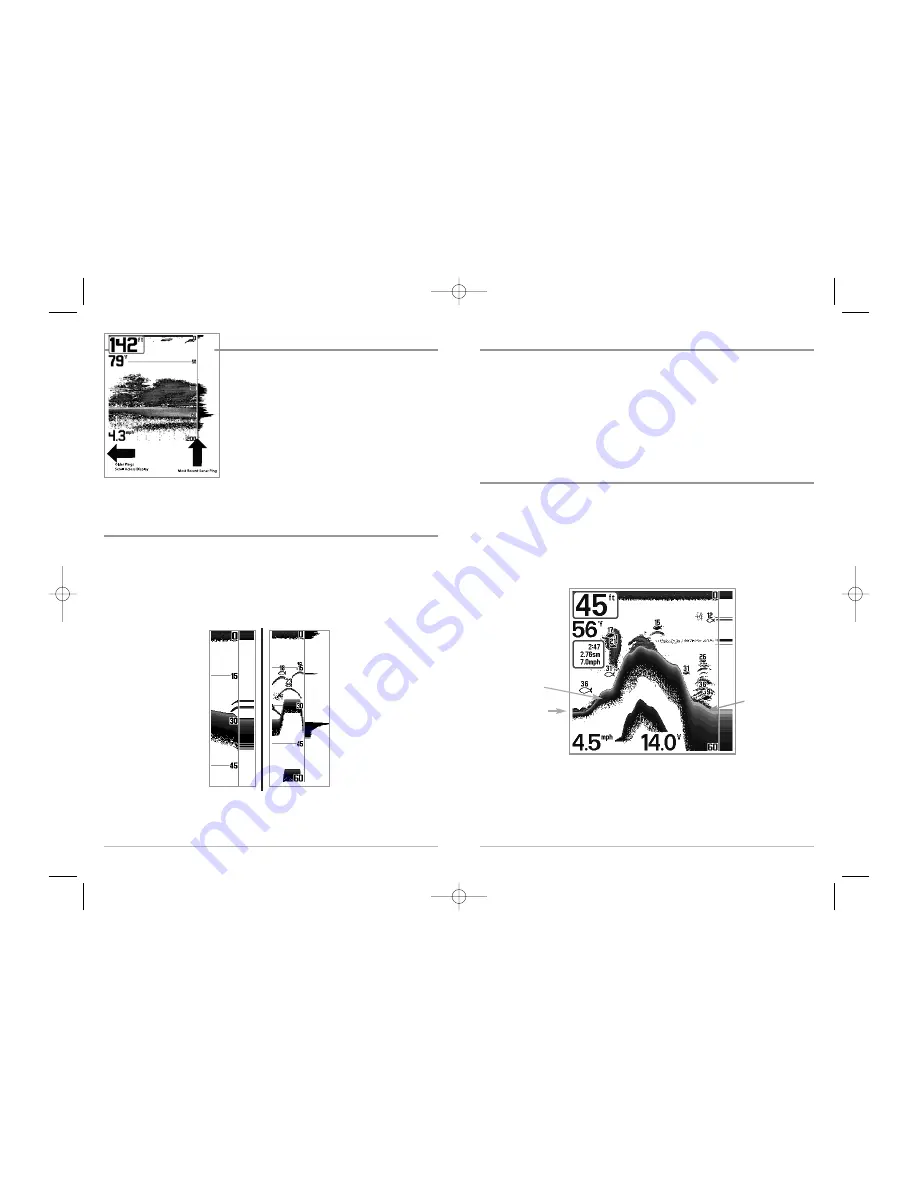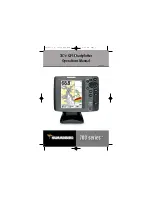
14
Freeze Frame
Freeze Frame -
Pressing any arrow on the 4-WAY Cursor Control key will freeze the screen
and a cursor will be displayed on the screen. The cursor can be positioned on the display
usingthe 4-WAY Cursor Control key to determine the depth of any sonar return. The
RTS® Window continues to update in Freeze Frame. In addition, see the effects of menu
setting changes with Instant Image Update. Pressing EXIT will exit Freeze Frame and the
display will start to scroll. Freeze Frame is available in the Sonar, Sonar Zoom, and
200/83 kHz Split Sonar Views.
Bottom Presentation
As the boat moves, the unit charts the changes in depth on the display to create a profile
of the
Bottom Contour
. The type of bottom can be determined from the return charted
on the display. A
Hard Bottom
such as compacted sediment or flat rock appears as a
thinner line across the display. A
Soft Bottom
such as mud or sand appears as a thicker
line across the display.
Rocky Bottoms
have a broken, random appearance.
The sonar returns from the bottom, structure and fish can be represented as either
WhiteLine®
or
Structure ID®
. See
Sonar Menu Tab: Bottom View
for details on how to
set the bottom view.
Bottom Contour Profile with RTS® Window.
Temp/Speed Accessory is optional.
Rocky Bottom
Hard Bottom
Soft Bottom
13
Understanding Sonar History
It is important to understand the significance of the 700
Series™ Fishing System display. The display does NOT
show a literal 3-dimensional representation of what is
under the water. Each vertical band of data received by
the control head and plotted on the display represents
something that was detected by a sonar return at a
particular time. As both the boat and the targets (fish)
may be moving, the returns are only showing a
particular segment of time when objects were detected,
not exactly where those objects are in relation to other
objects shown on the display.
Real Time Sonar (RTS®) Window
A
Real Time Sonar (RTS®) Window
appears on the right side of the display in the Sonar
View only. The RTS® Window always updates at the fastest rate possible for depth
conditions and shows only the returns from the bottom, structure and fish that are
within the transducer beam. The RTS® Window plots the depth and intensity of a sonar
return. (See
Sonar Menu: RTS® Window
) .
The
Narrow RTS® Window
indicates the sonar intensity
through the use of colors.
Red indicates a strong return
and blue indicates a weak
return. The depth of the
sonar return is indicated by
the vertical placement of the
return on the display depth
scale.
The
Wide RTS® Window
in
dicates the sonar intensity
through the use of a bar
graph. The length of the
plotted return provides an
indication of whether the
return is weak or strong. The
depth of the sonar return is
indicated by the vertical
placement of the return on
the display depth scale.
531476-1_A - 787c2_Eng.qxd 11/22/2005 3:21 AM Page 20


























